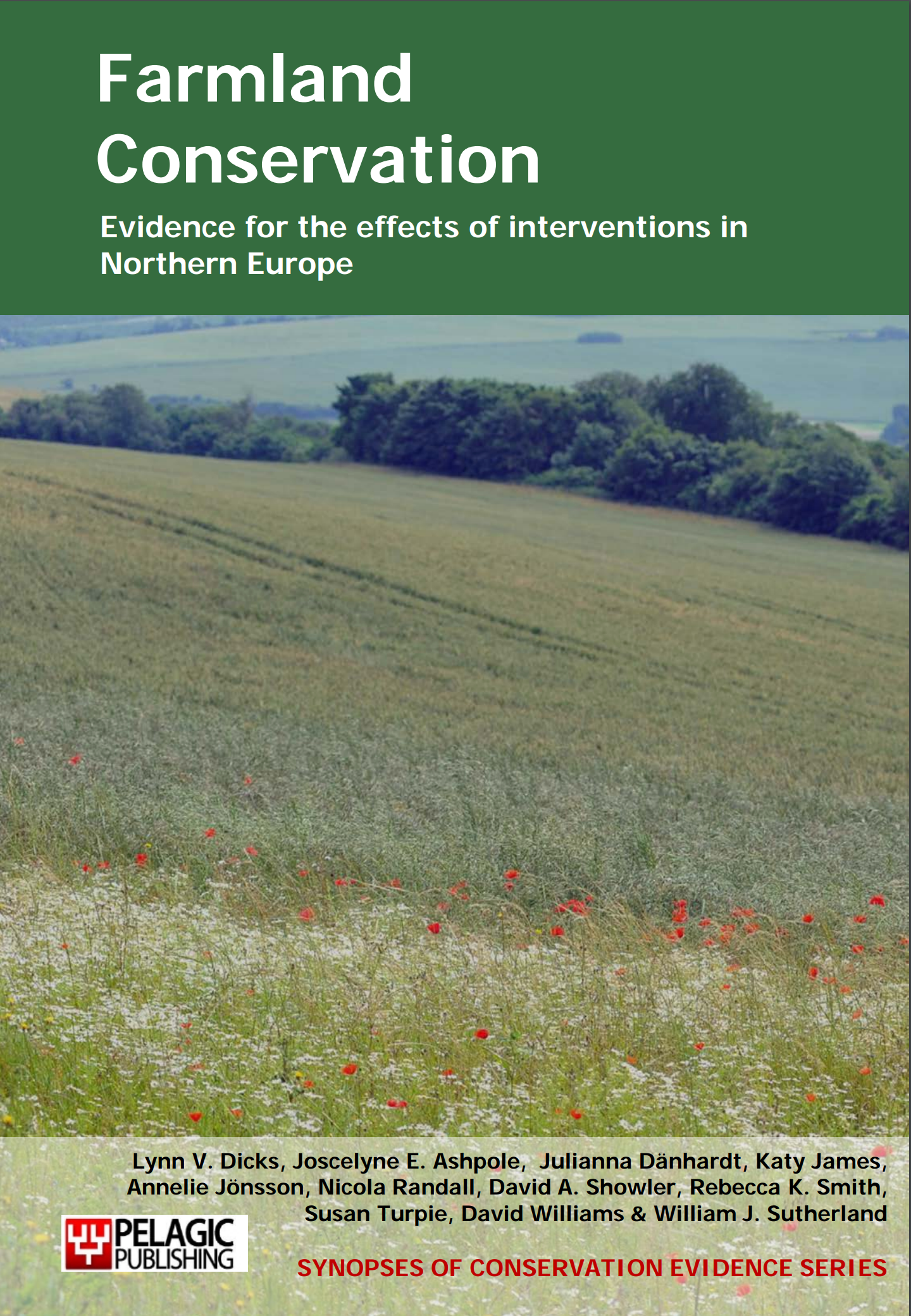Make direct payments per clutch for farmland birds
-
Overall effectiveness category Unknown effectiveness (limited evidence)
-
Number of studies: 3
View assessment score
Hide assessment score
How is the evidence assessed?
-
Effectiveness
0% -
Certainty
20% -
Harms
not assessed
Study locations
Supporting evidence from individual studies
A replicated and controlled study on intensive dairy grassland in the western Netherlands between 1993 and 1996 (Musters et al. 2001) found that northern lapwing Vanellus vanellus and black-tailed godwit Limosa limosa showed higher hatching success on 15 farms offered per-clutch payments for farmland birds than on nine control farms (65% vs 48% for lapwing, 63% vs 39% for black-tailed godwit). A non-significant difference was also seen for common redshank Tringa totanus (39% vs 21%). There were no differences in treatment during 1993-1994, before payments. The number of control farms was reduced to three in 1995-1996, because the farmers on other farms had become too involved in conservation for their farms still to be considered true controls. No other bird conservation measures were in place and the cost was estimated at €40/clutch. Population-level impacts were not observed, possibly due to the relatively short time-scale and small number of farms.
Study and other actions testedA replicated site comparison study of 42 fields in the Netherlands (Kleijn et al. 2006) found that more birds bred on 12.5 ha scheme plots consisting of a mixture of fields with postponed agricultural activities and fields with a per-clutch payment scheme than on conventionally farmed plots. A survey of individual fields found there was no difference in bird abundance and breeding on those fields with postponed agricultural activities only and on conventionally farmed fields. The number of bird species on each type of farmland also did not differ between agri-environment scheme and non-agri-environment scheme plots. The agri-environment scheme, which intended to promote the conservation of Dutch meadow birds, prohibited changes in field drainage, pesticide application (except for patch-wise control of problem weeds) and any agricultural activity between 1 April and early June. Additionally, farmers of surrounding fields were paid for each meadow bird clutch laid on their land (though no agricultural restrictions were in place on these fields). The study surveyed seven pairs of fields (one within the agri-environment scheme, one conventionally farmed) and the 12.5 ha area surrounding each field, from each of three different parts of the Netherlands four times during the breeding season.
Study and other actions testedA replicated and controlled paired-sites study in the western Netherlands in 2003 (Verhulst et al. 2007) found slightly higher breeding densities of birds on 19 grassland plots with per-clutch payments for wading bird clutches, compared to 19 paired, control plots, both when delayed mowing was also used and when per-clutch payment was the only scheme used (13 territories/plot for combined schemes, 13 territories/plot for per-clutch payment and 11 territories/plot for controls). However, birds were not more abundant under either scheme, compared with controls (approximately 125 birds/plot for combined schemes, 125 birds/plot for per-clutch payment and 110 birds/plot for controls). Wader breeding densities were higher (but not significantly so) on combined and per-clutch payment plots (approximately 7 territories/plot for combined schemes, 7 territories/plot for per-clutch payment and 5 territories/plot for controls). When individual wader species were analysed, there were higher numbers of redshank Tringa totanus on combined or per-clutch payment plots (approximately 5 birds/plot for combined schemes, 5 birds/plot for per-clutch payment and 3 birds/plot for controls), but there were no significant differences in breeding densities for redshank, northern lapwing Vanellus vanellus, Eurasian oystercatcher Haematopus ostralegus or black-tailed godwit Limosa limosa. The authors suggest that groundwater depth, soil hardness and prey density were drove these patterns. All farms had been operating the schemes for at least three (and an average of four) years before the study.
Study and other actions tested
Where has this evidence come from?
List of journals searched by synopsis
All the journals searched for all synopses
This Action forms part of the Action Synopsis:
Farmland Conservation
Farmland Conservation - Published 2013
Farmland Synopsis





)_2023.JPG)














